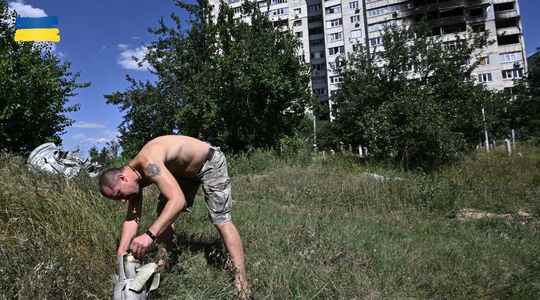For Oleksij Vasyliuk, the toll of the Russian invasion will not only be counted in dead and wounded. Since February, this activist, researcher and member of the Ukrainian Nature Conservation Group, an NGO, has been warning about the environmental damage caused by the war: in addition to human lives, a whole part of Ukrainian biodiversity is disappearing rhythm of bullets and shelling.
Before the war, Ukraine benefited from an uncommon wealth in terms of the environment. According to the Convention on Biological Diversity, the country contained before the war no less than 35% of European biodiversity for 6% of its surface. A rich fauna and flora of more than 70,000 species, some of which are rare and endemic. This wealth is due to its diversity and “favorable geographical location, with many migration routes and natural areas in the country”. Some of these areas (more than 200) were once protected, benefiting for this from the status of the Emerald network (equivalent to Natura 2000 in the EU).
Since the end of February, this nature has been ransacked in places. Incessant shelling, massive mining, fires, destruction of industrial sites leading to chemical pollution… Oleksij Vasyliuk no longer counts the attacks on biodiversity. “This war releases all possible and imaginable pollutants into the environment, it’s unheard of!” alert the activist. In mid-July, the Ukrainian Minister for Environmental Protection, Rouslan Strelets, estimated the environmental damage already suffered at 5.5 billion dollars. Estimates that leave Oleksij Vasyliuk skeptical: “We can count the number of burnt forests, but we will never know how many animals and plants died, because we have no single point of reference to know how many there were at the place that was burned”, judges the activist. However, he reminds us that among the areas of the Emerald network, nearly a hundred are now in territory occupied by the Russians.
A toxic legacy of war
A few days earlier, the United Nations Environment Program noted that the war in Ukraine could leave a “toxic legacy for generations to come”, insisting on the impact for the population in terms of public health, purity of air or water; or basic food.
The Ukrainian executive, for its part, presented several lines of work for the post-war period, through a “green recovery” plan. The latter provides for the creation of wildlife crossing points in the migratory corridors, the establishment of forest seed centers for the cultivation of young tree seedlings, but also the creation of a dozen national parks and fifteen centers wildlife rehabilitation. But also, various “green” projects in the fields of electricity, heat supply, industry, transport, construction, agriculture and waste, which will be partly financed through funds from Europe and other countries.
Still, this plan was freshly welcomed by a large majority of environmental organizations. Among them, the Ukraine War Environmental Consequences Work Group or Ecodiya, judged that this recovery did not really meet “the needs of the environment and future generations.” In reality, the organizations fear that this green revival is the pretext for a form of productivist turn, citing the increase in mining extraction or the creation of numerous infrastructures to allow the massive export of energy (hydrogen, electricity , gas).
“We welcome the Ministry’s plan to invest in new protected areas and in environmentally friendly products but we are disappointed that there is no mention of the importance of minimizing the negative consequences of development projects on the environment”, remarked for example Viktor Bogdan, executive director of WWF Ukraine shortly after the announcement of the plan at the beginning of July. A concern that Oleksij Vasyliuk shares, looking to the future: “The destruction of natural ecosystems due to hostilities is only part of the problem, believes the activist. What will be left of Ukrainian nature? if we use sand, stone, wood and cement to rebuild a quarter of the country that was destroyed?”
This article is from our special issue “We Ukrainians”, on newsstands August 24, in partnership with BFM TV.
